Thunderbirds vs. Blue Angels: Comparing Flight Demonstration Teams
Flight demonstrations at air shows across the country remain the most memorable exposure that many Americans have of the U.S. military. The dedicated pilots, air crews and support staff of the U.S. Air Force Thunderbirds and the U.S. Navy Blue Angels bring the power, awe, and pure joy of aerial acrobats to men, women and children from sea to sea. Let’s take a closer look at these two storied programs.
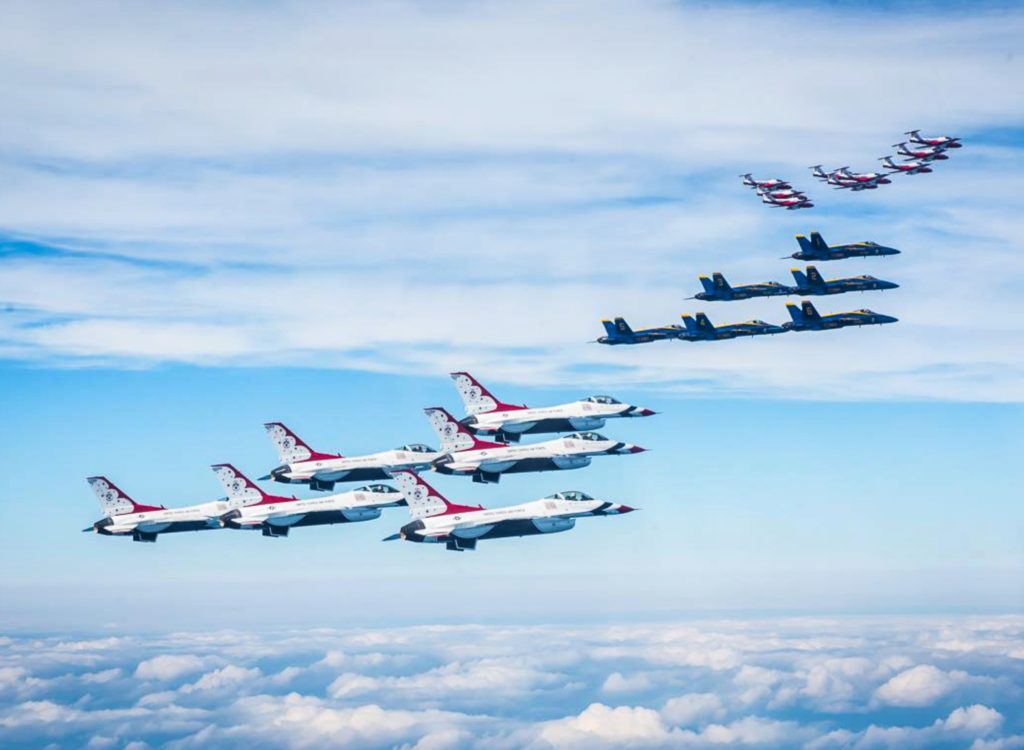
Thunderbirds vs. Blue Angels: Aircraft
The Thunderbirds fly the legendary F-16 Fighting Falcon. Painted in classic American red, white and blue – these snazzy fighter jets are impossible to miss.
Lockheed Martin’s F-16 is a multi-role, single-engine fighter aircraft used frequently in air superiority missions as well as close air support. It is considered a fourth-generation fighter after significant upgrades have been made to its design and avionics deck.
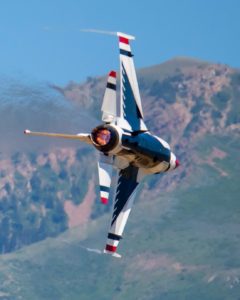
The F-16 is widely sold and distributed through foreign sales from the United States to other nations. It has been in service since 1978 and as of 2016, there are over a thousand F-16 Fighting Falcons in the United States Air Force. In terms of affordability for performance, it is one of the cheapest aircraft to fly and maintain while still managing complete air superiority.
The Blue Angels fly the famous F/A-18 Hornet. By 2021, all Blue Angels will transition into the F/A-18E/F Super Hornet – the newer version of the aircraft-carrier based fighter jet. The Blue Angels are painted in the iconic royal blue with yellow accents. Unmistakeable! The F/A-18E/F is an evolved F/A-18 meant to perform a variety of fighter roles. It can be equipped for almost any type of mission from electronic warfare to air-to-air interdiction and bombing missions.
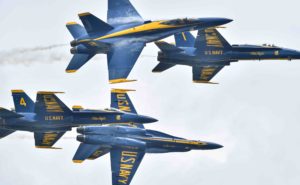
The Super Hornet was ordered in 1992 by the United States Navy to replace a large, multi-faceted fleet of carrier aircraft. Fast, agile, and nimble, this twin-engine jet fighter predominantly serves as a fighter escort and fleet air defense for a naval carrier group. F/A-18Es differ only slightly from F/A-18Fs in that the F variant is a two-seater and the E is a single seat jet. In order to distinguish between traditional F/A-18s and the Super Hornets, the Super Hornets have been unofficially dubbed ‘Rhinos’ to avoid confusion.
Thunderbirds vs. Blue Angels: History
USAF – In 1953, just six years after the U.S. Air Force was created, the 3600th Air Demonstration Unit was activated at Arizona’s Luke Air Force Base. The name “Thunderbirds” became the unofficial moniker because of the heavy Native American culture and presence in Arizona. The first flight demonstration team consisted of 7 officers and 22 enlisted men.
Major Dick Catledge, a training squadron commander at Luke AFB, was chosen as the team’s leader. Twins Bill and Buck Pattillo were selected and flew the left and right wing, respectively. For the difficult position of slot, the position sandwiched between both wingmen and behind the leader, Capt. Bob Kanaga was selected. The spare pilot was Capt. Bob McCormick. First Lieutenant Aubry Brown served as the maintenance officer for the team. Captain Bill Brock was the final officer selected for the team. He served as the information officer and team narrator.
The first aircraft the Thunderbirds flew was the F-84G Thunderjet. By 1955 the F-84F Thunderstreak became the team’s aircraft of choice. Original demonstrations lasted 15 minutes and there was no ‘solo’ portion.
After one year of the Thunderstreak, the team moved into the supersonic space by employing the F-100C Super Sabre in 1956. Except for a brief break in 1964 where the F-105 Thunderchief flew for six shows, the Thunderbirds flew the Super Sabre for 13 years until they moved forward in 1969 with the F-4E Phantom II. The first red, white and blue F-16 Fighting Falcon fighter jet was assigned to the team in 1982, and the rest is history. Overall it is the ninth aircraft that the Thunderbirds, and more impressive is that the USAF utilizes a frontline fighter as its demonstration aircraft.
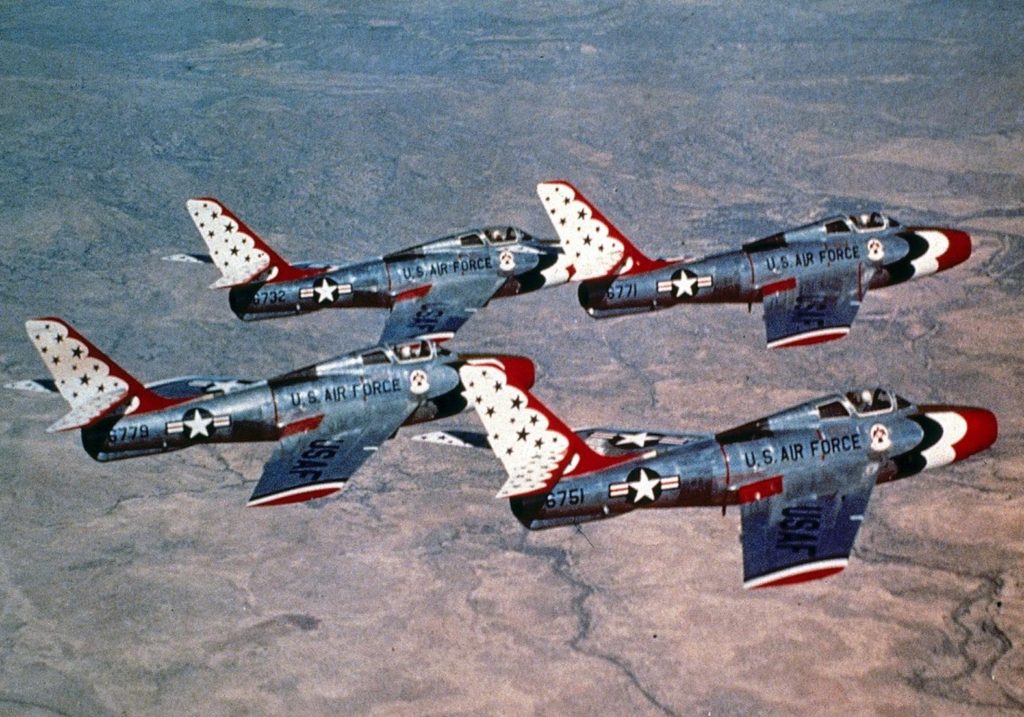
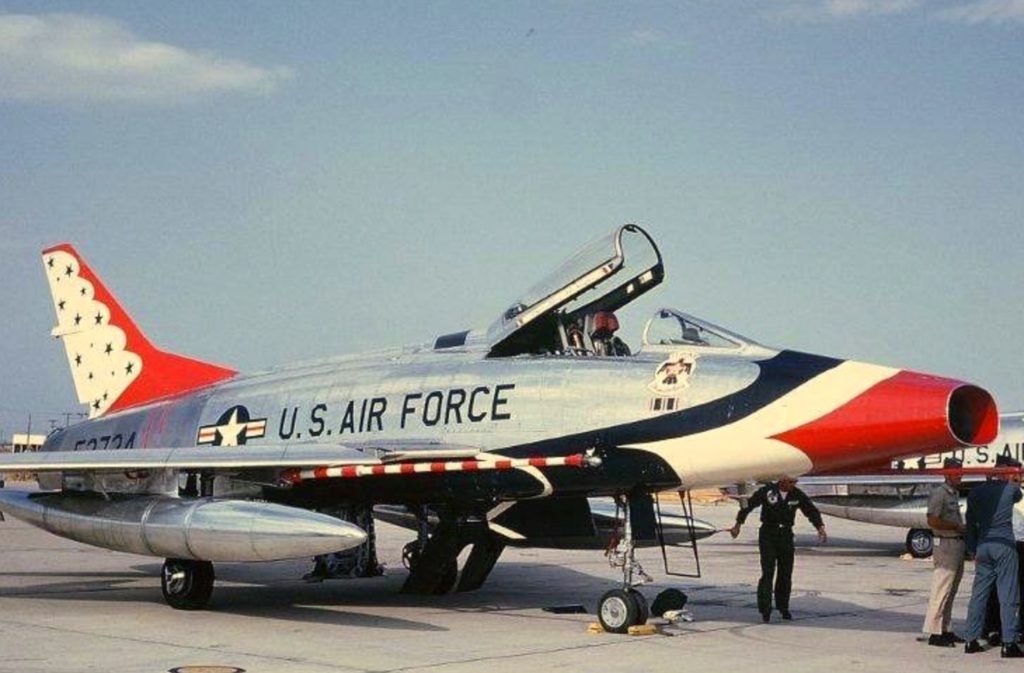
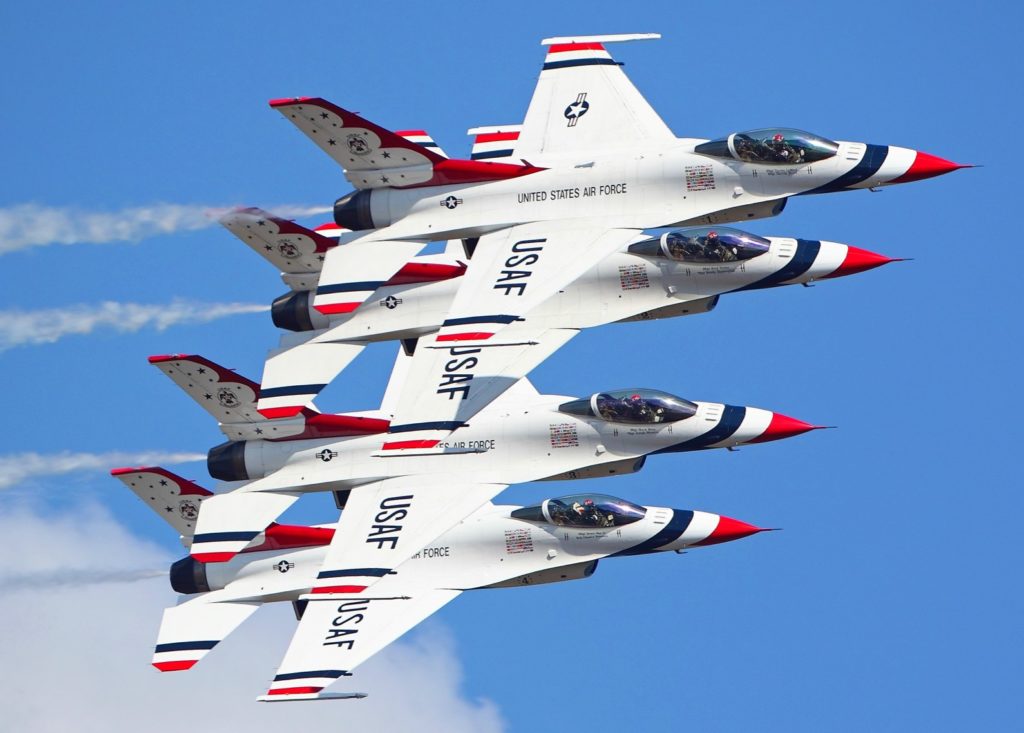
NAVY – Shortly after World War II ended, the legendary Chief of Naval Operations Adm. Cherster W. Nimitz ordered the creation of a U.S. Navy flight demonstration team. His idea was to maintain public interest and investment in naval aviation.
Three months later, in June of 1946, the Navy Flight Exhibition Team flew in its first-ever demonstration. Lt. Cmdr. Roy “Butch” Voris was the team’s leader. The Navy Flight Exhibition Team is the first aerial demonstration team in the U.S. and the second in the world. The first ever was Patrouille de France founded in 1931.
The name “Blue Angels” came from humble beginnings in the middle of the continent. During an airshow in Omaha, Nebraska, the team was introduced as the Blue Angels after Right Wing Pilot Lt. Maurice Wickendoll read the term in New Yorker Magazine.
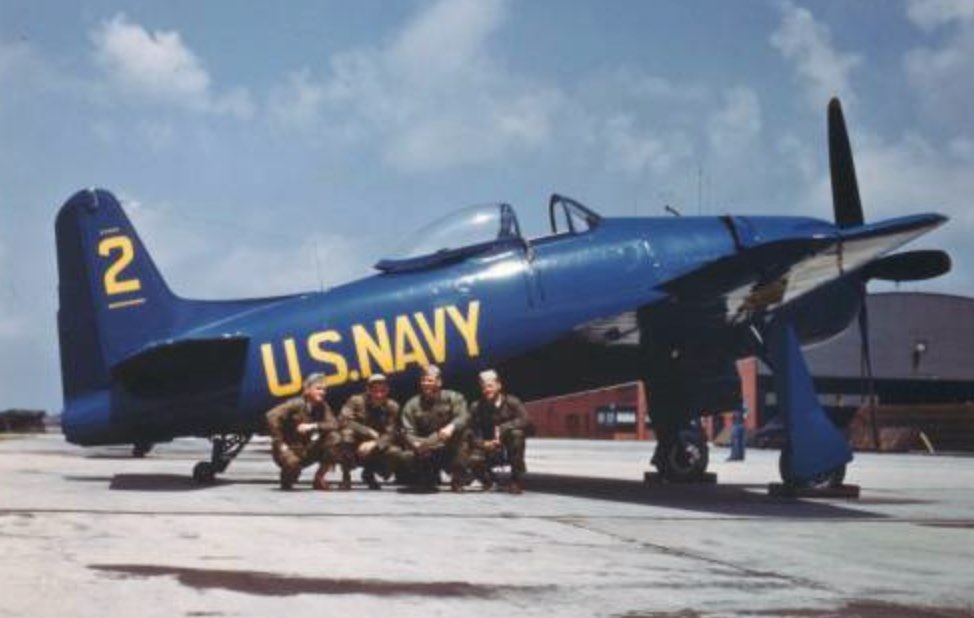
The first aircraft the Blue Angels flew was the F6F Hellcat in 1946. That lasted the first year and then the F8F Bearcat served as the go-to aircraft for the next three years. Next in line were multiple variations of the F9F Panther/Cougar that were flown for the next 11 years. In 1957, the F11F-1 Tiger entered the spotlight where it stayed for the next 11 years as well.
After that, in 1968, the F-4J Phantom II served for five years followed by the A-4F Skyhawk II which became a legend in its own right, serving for the next 12 years. Finally, in 1986, the F/A-18 Hornet became the Blue Angels workhorse of a demonstration aircraft. It is still active, but being transitioned to the F/A-18E/F Super Hornet in coming years.
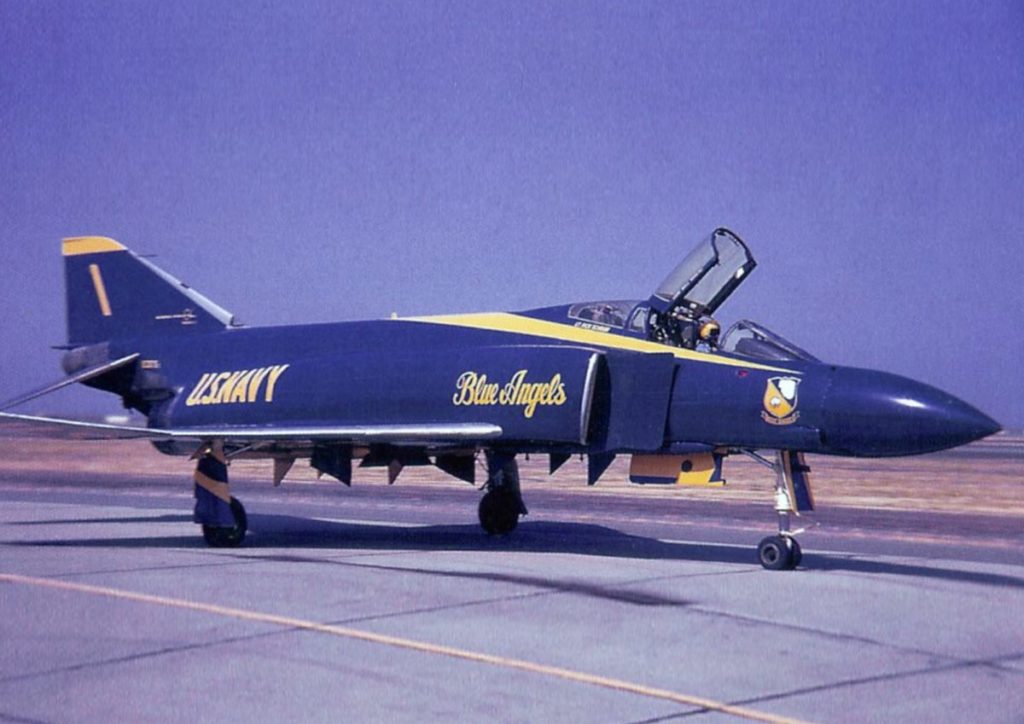
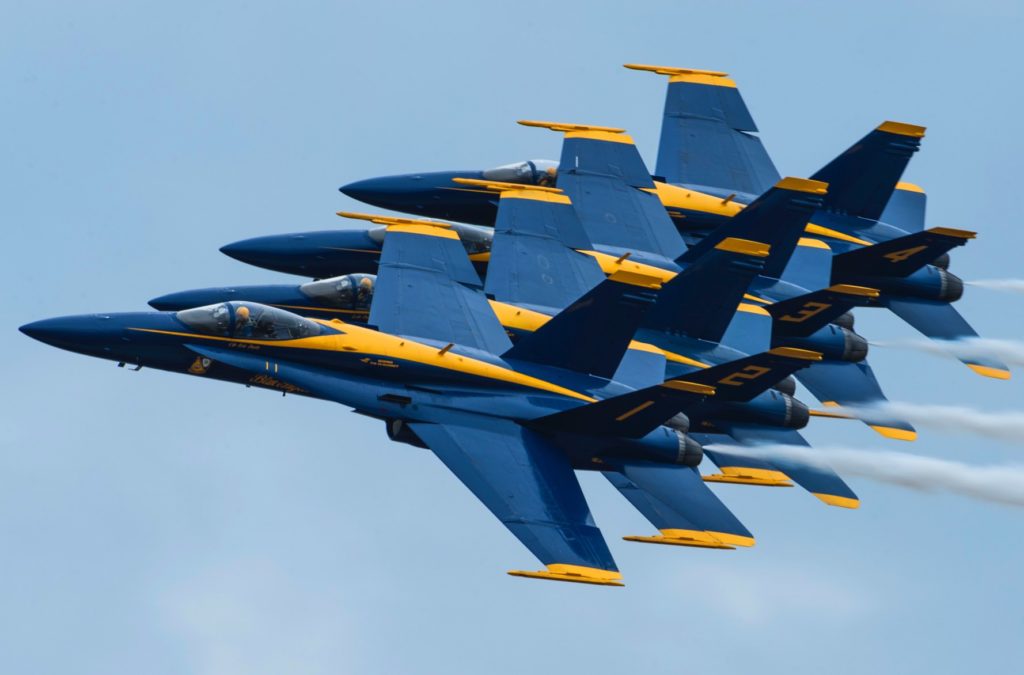
The aerial demonstration teams for the U.S. Air Force and U.S. Navy will always hold a special place in the hearts of those who have flown them, worked on them, supported them, and watched them for all these years. Military and civilian alike.
Click here to see our amazing collection of Blue Angels photos.

